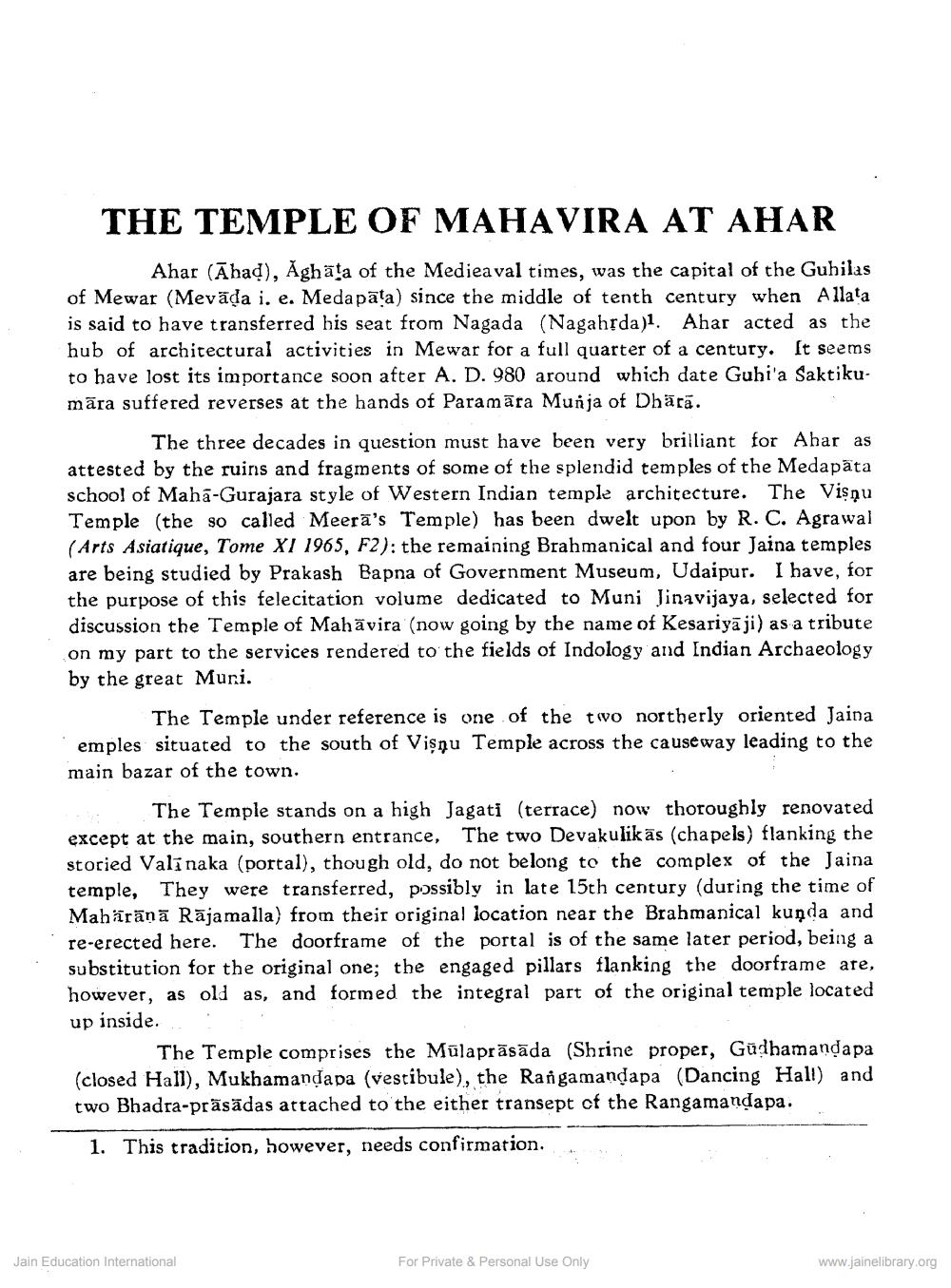Book Title: Temple of Mahavir at Ahar Author(s): M A Dhaky Publisher: Z_Jinvijay_Muni_Abhinandan_Granth_012033.pdf View full book textPage 1
________________ THE TEMPLE OF MAHAVIRA AT AHAR Ahar (Ahad), Ăghāta of the Medieaval times, was the capital of the Guhilas of Mewar (Mevāda i. e. Meda pāta) since the middle of tenth century when Allata is said to have transferred his seat from Nagada (Nagahrda)1. Ahar acted as the hub of architectural activities in Mewar for a full quarter of a century. It seems to have lost its importance soon after A. D. 980 around which date Guhi'a Saktikumāra suffered reverses at the hands of Paramāra Munja of Dhärā. The three decades in question must have been very brilliant for Ahar as attested by the ruins and fragments of some of the splendid temples of the Medapāta school of Maha-Gurajara style of Western Indian temple architecture. The Vişņu Temple (the so called Meerā's Temple) has been dwelt upon by R. C. Agrawal (Arts Asiatique, Tome XI 1965, F2): the remaining Brahmanical and four Jaina temples are being studied by Prakash Bapna of Government Museum, Udaipur. I have, for the purpose of this felecitation volume dedicated to Muni Jinavijaya, selected for discussion the Temple of Mahāvira (now going by the name of Kesariyāji) as a tribute on my part to the services rendered to the fields of Indology and Indian Archaeology by the great Muri. The Temple under reference is one of the tivo northerly oriented Jaina emples situated to the south of Vişnu Temple across the causeway leading to the main bazar of the town. The Temple stands on a high Jagati (terrace) now thoroughly renovated except at the main, southern entrance, The two Devakulikās (chapels) flanking the storied Valinaka (portal), though old, do not belong to the complex of the Jaina temple, They were transferred, possibly in late 15th century (during the time of Mahärānā Rājamalla) from their original location near the Brahmanical kunda and re-erected here. The doorframe of the portal is of the same later period, being a substitution for the original one; the engaged pillars flanking the doorframe are, however, as old as, and formed the integral part of the original temple located up inside. : The Temple comprises the Mülaprāsāda (Shrine proper, Güdhamandapa (closed Hall), Mukhamandapa (vestibule), the Rangamandapa (Dancing Hall) and two Bhadra-präsādas attached to the either transept of the Rangamandapa. 1. This tradition, however, needs confirmation. Jain Education International For Private & Personal Use Only www.jainelibrary.orgPage Navigation
1 2 3
